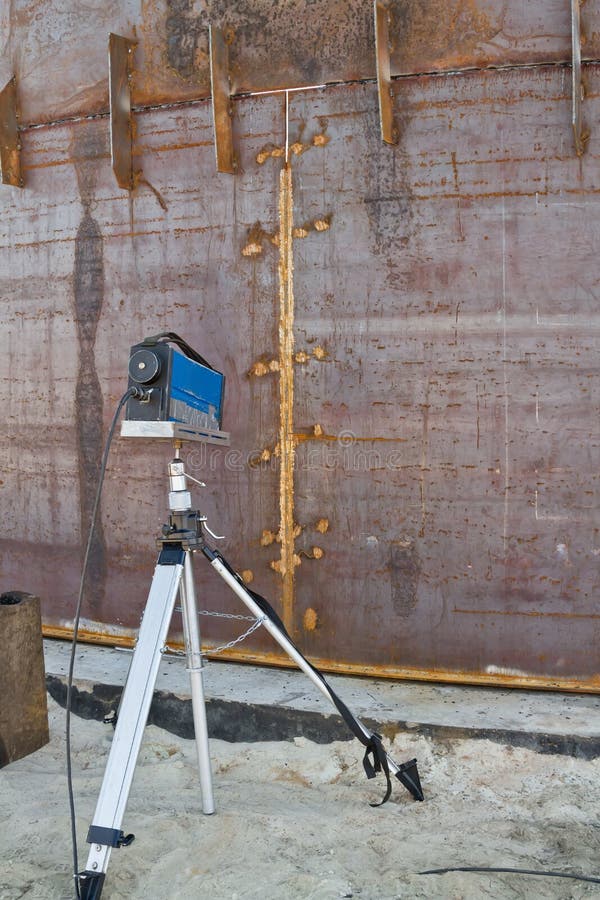The Essential Duty of Container Welding Evaluation in Ensuring Structural Honesty and Safety Compliance in Industrial Applications
In the world of commercial applications, storage tank welding assessment arises as a pivotal component in safeguarding structural stability and ensuring compliance with safety guidelines. Using a mix of techniques such as aesthetic analyses and progressed screening methods, these examinations serve to recognize and reduce possible imperfections prior to they intensify right into significant threats. The ramifications of these methods extend past simple regulative adherence; they essentially impact functional effectiveness and possession longevity. Nonetheless, the intricacies surrounding the assessment procedure prompt a closer exam of its methods and results, exposing layers of relevance that quality further expedition.
Relevance of Storage Tank Welding Assessment

Guaranteeing compliance with industry standards and guidelines is an additional significant element of storage tank welding evaluation. Regulative bodies mandate rigorous standards for the building and construction and maintenance of tank, and detailed examinations assist companies comply with these needs. Non-compliance can lead to severe penalties, consisting of fines and shutdowns, further highlighting the demand for extensive inspection methods.
Additionally, tank welding examination plays an important duty in preserving operational efficiency. Normal assessments can recognize prospective problems prior to they escalate, promoting timely fixings and lessening downtime. This positive approach not just enhances security yet likewise adds to cost financial savings in the future. In summary, the relevance of container welding assessment exists in its capacity to secure public health, protect the setting, and ensure conformity with governing frameworks.
Trick Assessment Strategies
Effective tank welding evaluation relies on a variety of essential techniques that ensure thorough examination of weld high quality and architectural integrity. Amongst one of the most widespread strategies are visual inspection, ultrasonic screening, radiographic screening, and magnetic fragment testing - Tank Welding Inspection. Each approach offers special advantages in evaluating different elements of the weld
Visual evaluation offers as the initial line of protection, allowing assessors to recognize surface area defects, abnormalities, or variances in the weld bead. Ultrasonic screening utilizes high-frequency acoustic waves to spot internal flaws, such as cracks or spaces, offering a comprehensive evaluation of weld stability. This technique is specifically efficient in discovering issues that may not be noticeable on the surface area.
Radiographic testing makes use of X-rays or gamma rays to generate photos of the welds, disclosing inner stoppages and giving a permanent document for future recommendation. This strategy is very efficient for crucial applications where the risk of failing have to be decreased.
Lastly, magnetic bit screening is utilized to determine surface and near-surface issues in ferromagnetic products. By using magnetic fields and great iron bits, assessors can identify interruptions that may compromise the architectural view publisher site integrity of the storage tank. Together, these methods form a robust structure for making certain high-grade welds in commercial applications.
Compliance With Security Criteria

Regular evaluations play a crucial role in ensuring conformity by identifying prospective failings or inconsistencies from suggested standards. Inspectors are educated to review weld quality, validate material specifications, and evaluate the general structural stability of storage tanks. Their knowledge is important in making sure that welding processes satisfy the called for security standards.
Moreover, compliance with security standards not just secures workers yet also safeguards the atmosphere from prospective risks such as leaks or tragic failures. Organizations that focus on safety conformity are much better positioned to alleviate dangers, enhance operational efficiency, and promote a society of safety and security within their workforce. In summary, preserving extensive compliance with safety criteria is indispensable for the successful operation of storage tank welding activities in industrial settings.
Benefits of Normal Evaluations
Routine evaluations are integral to maintaining the structural integrity and security of welded tanks. These assessments give a methodical strategy to recognizing prospective defects or weak points in the welds, guaranteeing that any kind of issues are resolved before they rise into significant failures. By conducting regular assessments, companies can discover rust, exhaustion, and various other forms of damage that may jeopardize tank efficiency.
Moreover, constant inspections add to compliance with sector regulations and standards. Sticking to these standards not just mitigates lawful threats but additionally enhances the company's reputation for security and integrity. Regular examinations cultivate a positive security society, motivating employees to recognize and prioritize the significance of devices integrity.

Situation Researches and Real-World Applications
Instance researches and real-world applications show the substantial impact of efficient tank welding assessment practices. Following the application of strenuous welding evaluation methods, including aesthetic and ultrasonic screening, the facility determined essential problems in weld seams that could have led to catastrophic failings.
Similarly, a water treatment plant applied a detailed inspection program for its tank welding operations - Tank Welding Inspection. By integrating non-destructive screening approaches, the plant was able to find very early indications of rust and tiredness in weld joints. This prompt intervention expanded the lifespan of the tanks and made sure compliance with safety and security regulations, therefore safeguarding public health
These situation researches underscore the importance of regular and read this article systematic tank welding examinations. By focusing on these techniques, markets can alleviate dangers, improve architectural stability, and make sure conformity with security requirements, eventually causing boosted operational effectiveness and minimized obligations.

Conclusion
In verdict, tank welding inspection is an essential element of maintaining architectural integrity and security in commercial applications. Utilizing numerous evaluation strategies makes sure early discovery of prospective problems, thereby stopping tragic failures.